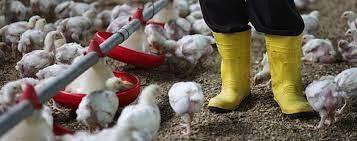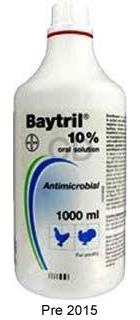 A ProMed-Mail posting recently commented on an article* describing an investigation of the level of knowledge and the frequency of antibiotic use among farm workers in relation to recovery of multi-drug resistant E. coli from broiler flocks. The study conducted in Peru considered workers on two broiler farms. Only one-third of 54 workers were even aware of resistance. It was considered significant that 61 percent of those interviewed had been medicated with an antibiotic during the previous month with an equivalent proportion obtaining a drug through OTC suppliers.
A ProMed-Mail posting recently commented on an article* describing an investigation of the level of knowledge and the frequency of antibiotic use among farm workers in relation to recovery of multi-drug resistant E. coli from broiler flocks. The study conducted in Peru considered workers on two broiler farms. Only one-third of 54 workers were even aware of resistance. It was considered significant that 61 percent of those interviewed had been medicated with an antibiotic during the previous month with an equivalent proportion obtaining a drug through OTC suppliers.
The study evaluated antibiotic resistance patterns in E. coli isolated from fifty broiler chickens from each farm. The evaluation demonstrated that 90 percent of isolates were multi-drug resistant as a result of extended-spectrum beta-lacamase production. Among the 72 percent of strains showing this activity, 84 percent carried the blaCTX-M gene.
The authors noted the lack of awareness of drug resistance and urged the application of surveillance systems and measures to reduce indiscriminate use of antimicrobials.
The outstanding deficiency in this paper as incisively noted by Dr. Eric Gonder was the absence of an attempt to determine the antibiotic resistance profile of potential pathogens isolated from workers on the farms. This should have been questioned by the editors or an explanation provided by the authors.
 Approximately two decades ago when there was considerable regulatory pressure to withdraw enrofloxacin used to suppress colibacillosis in turkeys and broilers, the question arose as to whether drug resistant pathogens could be introduced into flocks by workers. When a survey was suggested, federal health authorities expressed a disinclination to conduct the survey despite the reality that many who were employed on U.S. farms were either temporary or illegal workers from Mexico. Enrofloxacin is available OTC in Mexico and is widely abused in human medicine.
Approximately two decades ago when there was considerable regulatory pressure to withdraw enrofloxacin used to suppress colibacillosis in turkeys and broilers, the question arose as to whether drug resistant pathogens could be introduced into flocks by workers. When a survey was suggested, federal health authorities expressed a disinclination to conduct the survey despite the reality that many who were employed on U.S. farms were either temporary or illegal workers from Mexico. Enrofloxacin is available OTC in Mexico and is widely abused in human medicine.
There have been cases of isolation of enrofloxacin-resistant Campylobacter from turkey and broiler carcasses derived from farms that had no history of using Baytril™. Approval for the use of the fluoroquinolone class of antibiotics in food-producing animals was withdrawn on September 12th 2005 following extensive litigation following the October 31st 2000 FDA-CVM proposal.
*Davalos-Almeyda, M. et al Antibiotic use and resistance knowledge assessment of personnel on chicken farms with high levels of antimicrobial resistance: Cross-sectional survey in Ica, Peru. Antibiotics doi.org/10.3390/antibiotics11020190. February 2022.